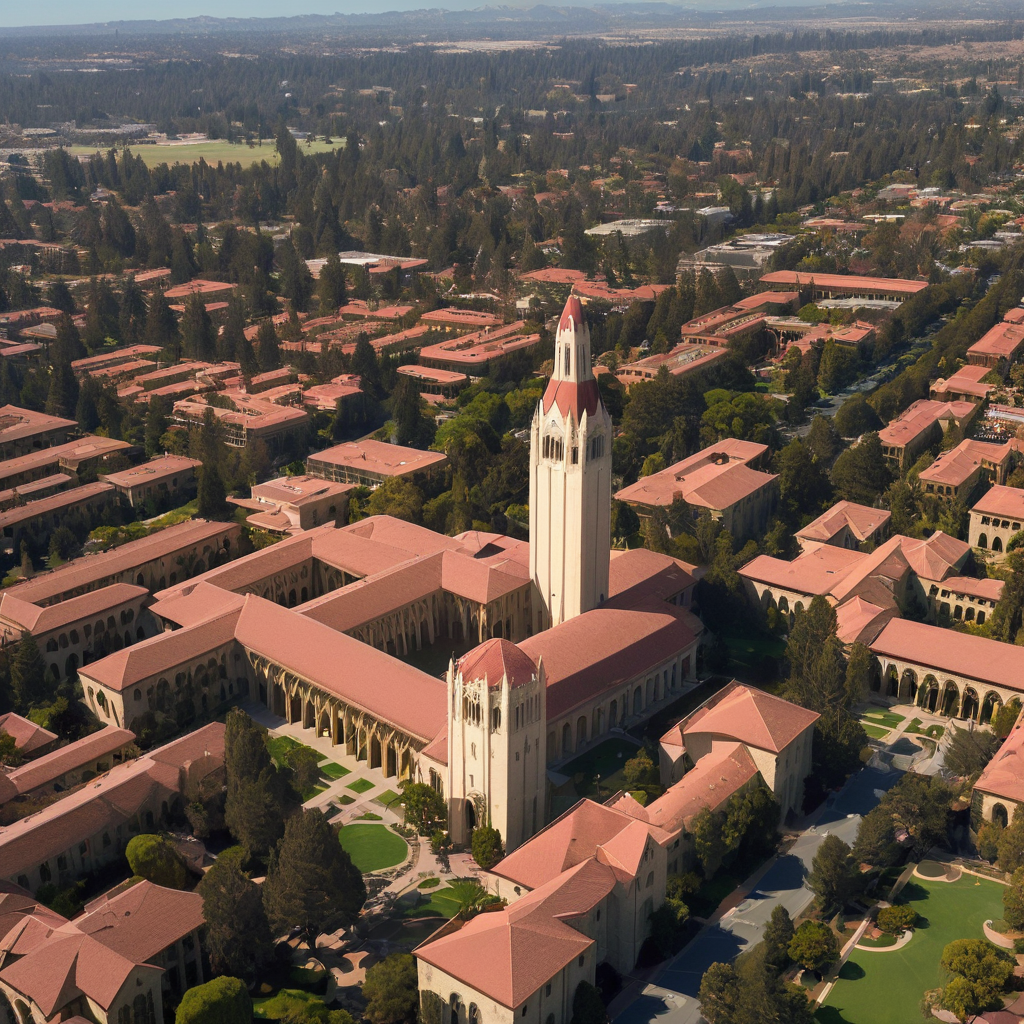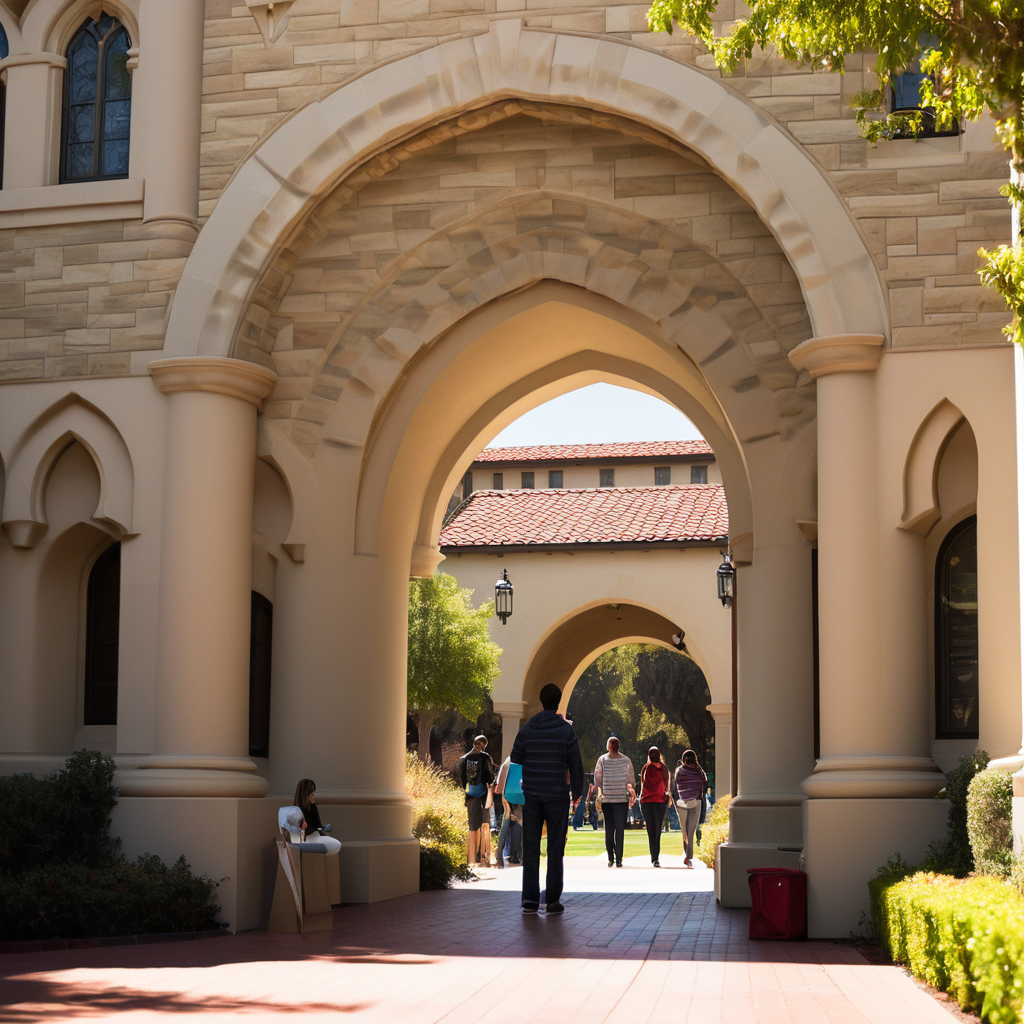Introduction : Exploring Stanford University: A Guide for Students
Stanford University is not just another educational institution; Exploring Stanford University: A Guide for Students, it is a powerhouse of innovation, a cradle of leaders, and a beacon of academic excellence. Located in the heart of Silicon Valley, Stanford has shaped the minds of countless influential figures and spearheaded groundbreaking research that has transformed the world. Let’s dive deep into the world of Stanford University and explore what makes it such a unique and revered institution.
History of Stanford University
Founded in 1885 by Leland and Jane Stanford in memory of their only child, Stanford University has a rich history that reflects its founders’ vision of fostering a “university of high degree” that would benefit the state of California and the world. The university opened its doors in 1891, overcoming numerous challenges to become one of the world’s leading institutions.
Over the years, Stanford has achieved several key milestones. From the establishment of the Hoover Institution in 1919 to the founding of the Stanford Research Institute in 1946, each step has reinforced its status as a leader in education and research. The university’s ability to adapt and innovate has been pivotal in its enduring success.
1. Campus and Location

Stanford’s campus is a sprawling 8,180 acres, making it one of the largest in the United States. The campus features a blend of historic and modern architecture, with iconic buildings such as the Main Quad, Hoover Tower, and the Stanford Memorial Church standing as testaments to its storied past.
Stanford benefits immensely from its proximity to the world’s tech hub. This location not only offers students unparalleled internship and job opportunities but also fosters a spirit of entrepreneurship and innovation.
Academic Programs
Stanford offers a plethora of academic programs, catering to a diverse range of interests and fields. Its undergraduate programs are known for their flexibility, encouraging students to explore multiple disciplines before declaring a major. Popular majors include Computer Science, Engineering, Business, and Biology.
Graduate programs at Stanford are equally prestigious, with the university housing seven schools: Business, Earth Sciences, Education, Engineering, Humanities and Sciences, Law, and Medicine. Each school is renowned for its rigorous curriculum and cutting-edge research.
Faculty and Research
The faculty at Stanford comprises some of the most brilliant minds in the world. Nobel laureates, Pulitzer Prize winners, and members of prestigious academies are part of the teaching and research community here. These faculty members are not only educators but also pioneers in their respective fields.
Stanford is a research powerhouse, with major achievements spanning across various disciplines. The university’s research centers and institutes, such as the SLAC National Accelerator Laboratory and the Stanford Institute for Economic Policy Research, facilitate groundbreaking studies that push the boundaries of knowledge.
Student Life
Stanford’s student body is diverse, dynamic, and driven. Students come from all 50 states and over 90 countries, creating a vibrant and inclusive community. On-campus housing is guaranteed for all four years of undergraduate study, with a variety of living arrangements that cater to different preferences.
Extracurricular activities at Stanford are plentiful. From student-run organizations and cultural clubs to athletic teams and arts groups, there is something for everyone. The ASSU (Associated Students of Stanford University) is a testament to the active student governance and community involvement on campus.
Admissions Process
Gaining admission to Stanford is highly competitive. For undergraduates, the admissions process considers academic excellence, extracurricular involvement, personal essays, and recommendations. Stanford employs a holistic review, looking for students who demonstrate intellectual vitality and a commitment to impacting their communities positively.
Graduate admissions vary by program but generally require a strong academic background, relevant experience, and a clear research or professional focus. Financial aid and scholarships are available to ensure that talented students from all backgrounds can afford a Stanford education.
Athletics and Sports
Stanford boasts a robust athletic program, with 36 varsity sports teams competing in the NCAA Division I. The Cardinal teams have won numerous national championships, reflecting the university’s commitment to excellence both on and off the field.
Athletic facilities at Stanford are top-notch, including the Stanford Stadium, Maples Pavilion, and Avery Aquatic Center. These facilities support a wide range of sports and provide students with opportunities to engage in physical activity and team sports.
Alumni Network
The alumni network at Stanford is extensive and influential. Graduates have gone on to become leaders in various fields, from business and politics to science and the arts. Notable alumni include U.S. President Herbert Hoover, Google co-founders Larry Page and Sergey Brin, and astronaut Sally Ride.
Alumni contributions significantly impact the university, with donations supporting scholarships, research, and campus development. Networking opportunities abound, with alumni events and online platforms connecting graduates worldwide.
2. Innovation and Entrepreneurship

Stanford’s role in Silicon Valley cannot be overstated. The university has been a catalyst for innovation and entrepreneurship, with many successful startups and companies originating from its students and faculty. Programs like StartX and the Stanford Venture Studio provide resources and support for budding entrepreneurs.
Success stories such as Google, Instagram, and Snapchat are testament to the university’s thriving entrepreneurial ecosystem. Stanford continues to be a fertile ground for ideas that change the world.
Diversity and Inclusion
Diversity and inclusion are core values at Stanford. The university actively promotes a diverse and inclusive environment through various programs and initiatives. The Diversity and First-Gen Office, along with various cultural centers, supports underrepresented students and fosters a sense of belonging.
Student and faculty diversity is celebrated, with efforts to ensure that everyone, regardless of background, has access to the opportunities and resources available at Stanford.
Global Influence and Partnerships
Stanford’s influence extends far beyond its campus. The university has numerous international collaborations and partnerships that enhance its research and academic programs. Study abroad opportunities allow students to gain global perspectives, while international research initiatives address global challenges.
Sustainability Initiatives
Stanford is a leader in sustainability, with numerous programs aimed at reducing its environmental footprint. The university’s sustainability initiatives include energy-efficient buildings, waste reduction programs, and research in renewable energy. The Stanford Energy System Innovations (SESI) project is a prime example of its commitment to sustainability.
Community Engagement
Engagement with the local community is a priority for Stanford. The university partners with local organizations to address community needs and offers numerous outreach programs. Volunteer opportunities abound, allowing students to make a positive impact on the surrounding areas.
ALSO READ : How to Make the Most of Campus Life at Trine University
Conclusion
Stanford University stands as a testament to what can be achieved through vision, dedication, and a relentless pursuit of excellence. From its humble beginnings to its current status as a global leader in education and research, Stanford continues to shape the future through its innovative programs and dynamic community. The university’s commitment to fostering leaders, advancing knowledge, and serving society ensures its lasting legacy and continued influence.
FAQs
1. What is Stanford University known for?
Stanford is renowned for its academic excellence, cutting-edge research, and significant contributions to innovation and entrepreneurship, particularly within Silicon Valley.
2. How can I apply to Stanford University?
Prospective students can apply through the Common Application or Coalition Application for undergraduates, while graduate applications are submitted directly to the respective departments. The admissions process is highly competitive and holistic.
3. What financial aid options are available at Stanford?
Stanford offers need-based financial aid for undergraduates and various scholarships, fellowships, and assistantships for graduate students. The university is committed to making education affordable for all admitted students.
4. What is the student life like at Stanford?
Student life at Stanford is vibrant and diverse, with numerous extracurricular activities, cultural events, and athletic programs. The campus community is inclusive and dynamic, offering a supportive environment for all students.
5. How does Stanford support entrepreneurship?
Stanford supports entrepreneurship through programs like StartX, the Stanford Venture Studio, and various courses and workshops. The university’s location in Silicon Valley provides additional resources and networking opportunities for aspiring entrepreneurs.


